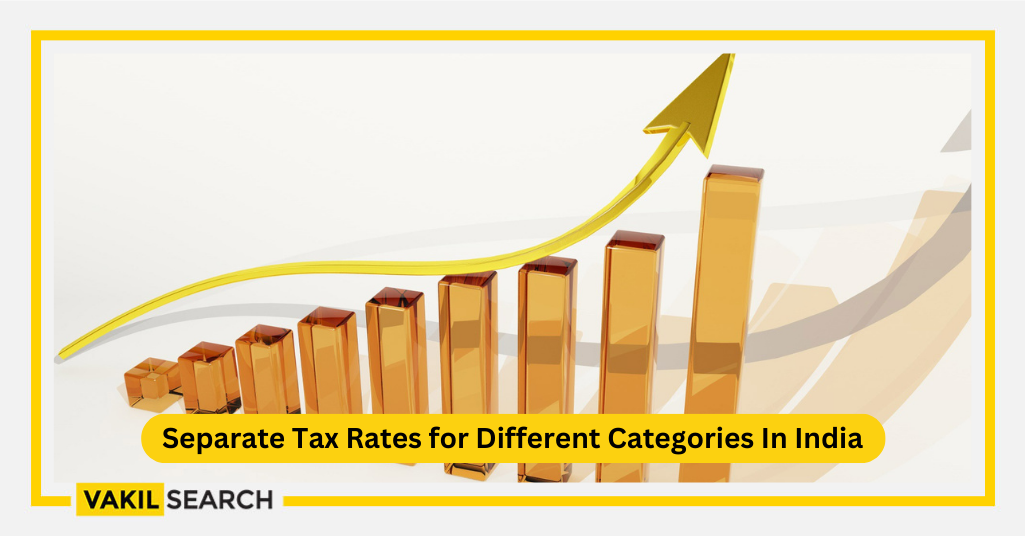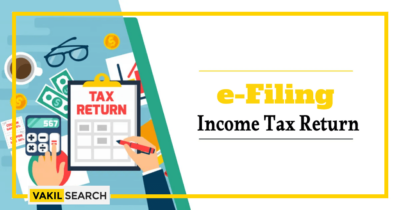Taxation is very crucial for every citizen. But, most of the people don't know the tax rates for different categories from time to time. This blog describes different tax slabs for the Financial Year 2022-23. It provides a comparative study of tax slabs without exemption and tax slabs with the exemption.
The Government of India (GoI) wants to promote a culture of responsibility among the taxpayers. GOI believes that empowering people will encourage voluntary tax payments. Thus, it wants to give more power to decide its own tax regime which suits its priorities. For the financial year 2022-23, GOI has announced a flexible tax regime. It is giving the individual the choice to decide on their own. Presently, individuals have two alternative choices: Lets see the Seperate Tax rates for different categories in India.
Either they can select lower tax rates and forgo certain permissible exemptions and other deductions approved by the government. They can continue to pay previous higher tax rates and accept the rebates and exemptions offered as incentives by the GOI.
Evidently, the new income tax regime is offering more flexibility by allowing individuals to pay their tax by choosing any of the options specified by the GOI. Even though it may seem complicated, in reality, GOI has simplified the overall tax structure by eliminating and reducing variations in the tax rate on the basis of the age of the taxpayers as well as the place of residence. GOI has revised the Income tax slab for 2022-23. Let’s first try to understand the basic difference between the two choices that individuals are having under the New Tax regime
1ST OPTION: Tax Rates Without Exemption
The Tax Rates Structure for Different Income Slab
In India there are different tax structures for different income slabs. For instance, a person earning below ₹2.5 lacs will not have any tax burden. On the other hand, a person earning above ₹2.5 lacs is entitled to a tax amount of 5%. Having an income above ₹5 lacs will increase the tax burden further. It is estimated that an individual earning more than ₹5 lacs should pay a tax burden of 10% at least. Therefore, it is evident that the more income, the more liability associated with the tax . The income tax slab and corresponding tax rate for senior citizens (aged between 60 – 80 years) (both men & women) have remained the same. Expect, that the upper limit for the 1st slab for them is raised up to ₹3,00,000.
Ensure financial clarity. Discover your income tax liability with our accurate new tax regime calculator.
How Can You Be Exempted From Paying Tax?
The new tax regime applicable for FY 2021-22 & FY 2022-23, includes a detailed approach. Important points are as given below:
- Applicable for all individuals (below 60 years – for both Men & Women) and HUFs
- The income tax slab and corresponding tax rate for senior citizens (aged between 60 – 80 years) (both men & women) have remained the same. It is understood, that the upper limit for the initial slab of income for them is raised up to ₹3,00,000
- If the senior citizens (aged between 60 – 80 years) (both men & women) choose the 2nd option for tax payment, they will have the same obligation to pay the surcharge amount as directed by the Government.
Tax Rates Structure as per New Income Tax Slab for 2022-23
Herewith we discuss the tax rate structures which vary with the varying slabs of income. Basic slabs, however, do not vary much. Experts state that 5% of tax remains applicable with a starting income of ₹2,50,000 and above.
Surcharge Charge Applicable as per Tax Rates: A Snapshot
It is interesting to know that, surcharge amounts are applicable for an individual who earns more than 50 lacs. Rates of the surcharge are calculated on the total Income tax amount while a maximum surcharge is levied for an individual earning more than ₹5 crores.
Additional Clauses
- Taxpayers can have a 4% cess on income tax including a surcharge expenditure on Health and Education
- According to the provision of 87A, taxpayers can have a refund of ₹12,500 or 100% of the income tax they have paid ( whichever is less) if their income is below ₹5 Lakhs
What is Cess’s amount?
A cess is a kind of additional tax imposed by the government on top of the existing tax. The government levies this form of tax for a specific period of time to collect additional revenue for a specific purpose. There is a difference between Cess and any other form of tax like – personal income tax or excise duties. Cess can be best described as ‘tax on tax’
What is Surcharge’s charge?
The surcharge is another form of ‘tax on tax’. It is imposed on the payable tax amount, and not on actual income. This can be explained as follows – if someone is paying ₹300 for earning ₹1000, the tax rate for him is around 30%. If now, he is asked to pay an additional 10% surge charge, he will have to pay an additional ₹30 on top of the ₹300 he has been paying. That means his net payable amount will be ₹330 as tax including the surge charge.
This simplifies the new tax structure and the income tax slab for 2022-23. Individuals need to clearly understand its different components before deciding which one will suit their purpose and will actually reduce their tax liability. When the government is empowering and encouraging us to take our own decisions, with rights comes responsibility. We need not forget that it is our responsibility to pay taxes right on time. This will save us from unnecessary harassment and paying penalties.
Conclusion
After all is said and done, surcharge amounts differ after a particular slab of income in addition to the income tax amount determined on the entire income of an individual. The surcharge amounts are also assessed based on a minimum income bracket and rise as income does as well. You should now have a better understanding of the tax slab rates thanks to this blog, we hope. If you need more insights get in touch with Vakilsearch. We have the best tax experts who can provide clear insights about the taxation system and also help in filing your taxes.
Read More:-










